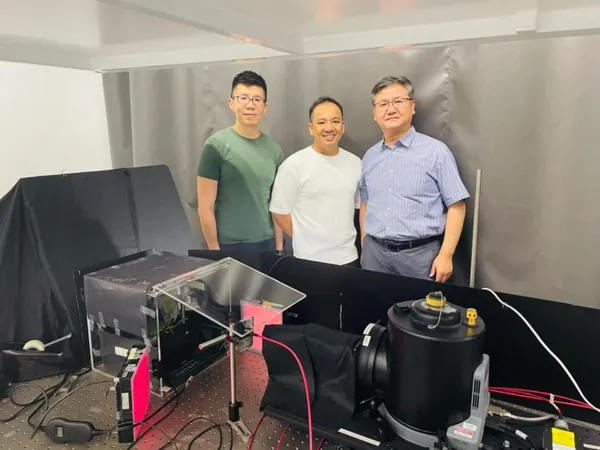
Revolutionary Nanosensor Set to Transform Plant Growth Monitoring!
2025-05-21
Author: Yu
Unlocking Plant Growth Secrets with Cutting-Edge Technology
In a groundbreaking advancement, researchers have unveiled the world’s first species-agnostic nanosensor designed for real-time, non-destructive monitoring of a vital plant hormone—indole-3-acetic acid (IAA). This revolutionary tool provides crucial insights into plant health, enabling farmers to optimize crop growth like never before.
Why Auxin Matters for Your Plants
Auxins, particularly IAA, are essential for plant development, influencing key processes such as cell division and response to environmental challenges. This hormone is a pivotal indicator of how well plants adapt to stressors like heat and shade—conditions that could significantly impact agricultural productivity.
Meet the Nanosensor: A Game-Changer for Agriculture
Developed by the Singapore-MIT Alliance for Research and Technology (SMART) in collaboration with MIT and Temasek Life Sciences Laboratory, this innovative near-infrared (NIR) fluorescent nanosensor is capable of tracking IAA levels across various plant species without genetic modifications. Traditional methods of IAA detection can harm plants and are not universally applicable—this new technology aims to change that.
Real-Time Insights for Better Crop Management
Using advanced corona phase molecular recognition (CoPhMoRe) techniques, the nanosensor can monitor IAA fluctuations across different plant tissues in real-time. This capability allows farmers to make data-driven decisions regarding irrigation, nutrient delivery, and pruning, significantly enhancing crop resilience and yield.
Tackling Global Challenges with Agritech
According to Professor Michael Strano from MIT, this sensor offers a vital solution in the fight against food insecurity and climate change, allowing for timely interventions based on accurate data. As urban and indoor farming grows, the potential applications of this technology are vast.
How It Works: The Science Behind the Sensor
The nanosensor is built using single-walled carbon nanotubes wrapped in a special polymer, allowing it to detect IAA via changes in NIR fluorescence intensity. Successfully tested across various plants—including popular crops like spinach and choy sum—this sensor can adapt to diverse environmental conditions.
Future Applications: The Next Steps in Precision Agriculture
Looking forward, researchers aim to expand this technology to monitor a range of plant health markers and to develop targeted sensing methods that will help fine-tune growth conditions. This sensor doesn’t just enhance agricultural practices; it also deepens our understanding of plant biology.
Join the Agricultural Revolution!
With this pioneering nanosensor, the future of farming is bright. This is not just a scientific achievement; it’s a leap towards a sustainable agricultural future. Expect to see significant advancements in crop management and yield optimization—stay tuned!





 Brasil (PT)
Brasil (PT)
 Canada (EN)
Canada (EN)
 Chile (ES)
Chile (ES)
 Česko (CS)
Česko (CS)
 대한민국 (KO)
대한민국 (KO)
 España (ES)
España (ES)
 France (FR)
France (FR)
 Hong Kong (EN)
Hong Kong (EN)
 Italia (IT)
Italia (IT)
 日本 (JA)
日本 (JA)
 Magyarország (HU)
Magyarország (HU)
 Norge (NO)
Norge (NO)
 Polska (PL)
Polska (PL)
 Schweiz (DE)
Schweiz (DE)
 Singapore (EN)
Singapore (EN)
 Sverige (SV)
Sverige (SV)
 Suomi (FI)
Suomi (FI)
 Türkiye (TR)
Türkiye (TR)
 الإمارات العربية المتحدة (AR)
الإمارات العربية المتحدة (AR)